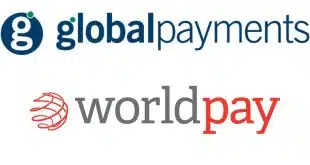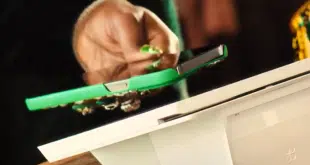The volume of paper checks processed by the Federal Reserve is falling at a rate of 10% to 11% so far this year and is expected to plunge another 13% to 15% in 2005, according to James M. Lyon, first vice president at the Federal Reserve Bank of Minneapolis. This follows a 5% drop in Fed check volume last year, he said. Speaking in San Francisco today as part of a panel discussion at e-Check 2004, a conference organized by the National Automated Clearing House Association, Lyon said anywhere from one-third to one-half of the decline in checks can be attributed to the conversion into electronic debits of checks sent by consumers to billers' lockboxes. This category of e-check, known as ARC, has exploded this year, and is now the fastest-growing form of electronic payment in U.S. history, according to NACHA. Speaking on the same panel, Elliott C. McEntee, president and chief executive of NACHA, predicted ARC transactions would exceed 2 billion this year, doubling the volume posted in 2003. The Fed's Lyon said the decline in check volume will accelerate next year because of the increasing adoption of check imaging and so-called substitute checks under the Check Clearing for the 21st Century Act, or Check 21, which goes into effect Oct. 28. Check 21 encourages check imaging by conferring legal status on substitute checks, or printouts of check images. Although Check 21-related activity will be slower in the fourth quarter than the Fed originally had thought, Lyon said, “it will start to pick up in the first quarter of 2005.” As for ARC, he predicts it will continue to grow at a rapid clip, particularly as its use expands beyond the small number of major financial institutions that now account for most ARC volume, and will continue to eat into paper check volumes. “Just a handful of institutions make up 90% of that volume,” he said. “We will see strong growth in ARC going forward.” Both Lyon and McEntee expressed some concern about the impact declining check volumes are having on unit costs in check processing. Lyon pointed out that the Fed has already announced two rounds of closings of check-processing facilities, resulting in the number of offices dropping from 45 to 23, in part in an effort to concentrate volumes at remaining offices (Digital Transactions News, Aug. 2). And the closings are likely to continue. “Twenty-three offices doesn't represent the endgame,” he said. “I envision a time when we'll have at most a handful of offices.” McEntee said one of his concerns is that the rising unit cost of check processing could have a parallel effect on the unit cost of check conversion. Of the five categories of e-check, three involve conversion of paper checks presented for payment into electronic ACH funds transfers. Besides ARC, the other two are POP, or checks presented at the point of sale, and RCK, or electronic representment of checks. WEB and TEL, which refer to electronic ACH transactions on the Internet and over the phone, do not rely on check conversion since they stem from transactions that never involved a check to begin with.
Check Also
CPI’s Digital Wallet Push and other Digital Transactions News briefs from 4/16/25
CPI Card Group Inc. added Web push provisioning to give card issuers the capability to more …





